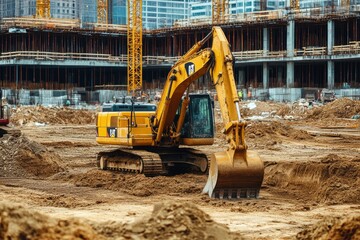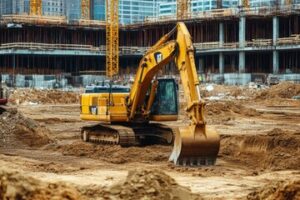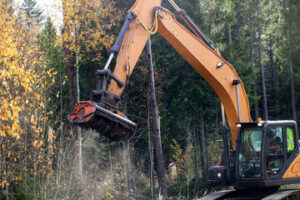Plumbing basics encompass the essential responsibilities that ensure a home or building’s water and drainage systems function properly. Plumbing is a fundamental part of any structure, providing clean water for drinking, cooking, and cleaning while safely removing wastewater.
A well-maintained plumbing system improves the quality of life and helps prevent potential damage caused by leaks, clogs, and other plumbing issues. Visit https://www.plumbing-express.com/ to learn more.
Understanding the key responsibilities involved in plumbing is essential for maintaining an efficient and reliable system. Professional plumbers have the expertise and tools to handle a wide range of tasks, from installing and repairing pipes to diagnosing and resolving complex issues. Their work ensures that water flows properly, fixtures function correctly, and wastewater is managed effectively.
One of the primary responsibilities in plumbing is installing and maintaining water supply lines. Water supply lines deliver clean water from the source to various fixtures and appliances within a building. Plumbers are responsible for designing the layout of these supply lines to ensure even water distribution and consistent pressure. They use different types of pipes and fittings, depending on the specific requirements of the building and the local plumbing codes. Proper installation prevents leaks, reduces the risk of contamination, and ensures that water reaches each fixture with the appropriate pressure. Maintenance of these supply lines includes inspecting for leaks, corrosion, and blockages, as well as replacing damaged sections to maintain consistent water flow.
Drainage systems are another essential aspect of plumbing. Drainage systems carry wastewater away from sinks, toilets, showers, and appliances, directing it to the sewer or septic system. Plumbers design and install drainage pipes with the correct slope and venting to prevent clogs, backups, and sewer gas buildup. Ensuring that wastewater flows away efficiently helps maintain a hygienic environment and prevents structural damage caused by water infiltration. When drainage issues arise, plumbers use specialized tools such as drain snakes and hydro jetting machines to clear blockages and restore proper flow. Regular maintenance of drainage systems helps prevent recurring problems and extends the lifespan of the plumbing infrastructure.
Fixture installation and repair are also central responsibilities in plumbing. Fixtures such as sinks, faucets, toilets, and showers require proper installation to function efficiently and avoid leaks. Plumbers ensure that fixtures are connected to the water supply and drainage systems securely and that all seals and gaskets are properly fitted to prevent leaks. When a fixture malfunctions or becomes damaged, plumbers diagnose the problem and repair or replace the affected parts. Common issues include leaking faucets, running toilets, and clogged shower drains, all of which can lead to water waste and higher utility bills if not addressed promptly. Professional plumbers have the expertise to resolve these issues quickly and effectively, restoring the functionality of the fixtures.
Hot water systems are another critical area of plumbing responsibility. Water heaters provide hot water for bathing, cooking, and cleaning, and plumbers are responsible for installing, maintaining, and repairing these systems. Proper installation ensures that the water heater operates safely and efficiently, delivering hot water at the desired temperature and pressure. Maintenance tasks include flushing the tank to remove sediment buildup, checking the anode rod for corrosion, and testing the pressure relief valve. When a water heater malfunctions, plumbers identify the cause and perform the necessary repairs or recommend a replacement if the unit is beyond repair. Efficient hot water systems reduce energy consumption and provide reliable hot water for daily use.
Detecting and repairing leaks is a crucial part of plumbing. Leaks can occur in supply lines, drainage pipes, and fixtures, leading to water waste and property damage. Even small leaks can cause significant problems over time, including mold growth, structural damage, and increased water bills. Plumbers use advanced techniques such as pressure testing, acoustic sensors, and infrared cameras to locate hidden leaks without causing unnecessary damage to walls or floors. Once the leak is identified, they repair or replace the affected pipe or fitting, ensuring that the plumbing system remains secure and leak-free. Preventing and repairing leaks helps maintain the integrity of the plumbing system and reduces long-term costs.
Clog removal and prevention are also essential plumbing responsibilities. Clogs can develop in sinks, toilets, showers, and main sewer lines due to the buildup of hair, grease, soap residue, and foreign objects. Plumbers use tools such as augers, drain snakes, and hydro jetting machines to remove clogs and restore proper drainage. They also provide guidance on preventing future clogs, such as avoiding the disposal of grease and food particles down the drain and using drain covers to catch debris. Maintaining clear drains prevents backups and reduces the risk of pipe damage and flooding, ensuring that wastewater flows away from the property effectively.
Backflow prevention is another important aspect of plumbing. Backflow occurs when contaminated water flows back into the clean water supply, posing a serious health risk. Plumbers install and maintain backflow prevention devices that create a barrier between the clean water supply and potential sources of contamination. Regular testing and maintenance of these devices ensure that they function properly and comply with local regulations. Backflow prevention protects the health and safety of building occupants and maintains the quality of the water supply.
Water pressure regulation is a key factor in maintaining an efficient plumbing system. Low water pressure can result in weak flow from faucets and showers, while high water pressure can strain pipes and fixtures, leading to leaks and premature wear. Plumbers assess the water pressure and install pressure regulators to maintain an optimal balance. They also identify and repair issues that affect water pressure, such as pipe blockages, leaks, and faulty valves. Proper water pressure regulation ensures that fixtures operate efficiently and reduces the risk of damage to the plumbing system.
Sewer line maintenance and repair are complex but essential plumbing responsibilities. Sewer lines carry wastewater from the building to the main sewer system or septic tank. Blockages, tree root intrusion, and pipe damage can disrupt the flow of wastewater, leading to backups and unpleasant odors. Plumbers use video inspection cameras to identify the source of the problem and recommend the best course of action. Repair methods include clearing blockages with hydro jetting, replacing damaged sections of pipe, and installing new sewer lines if necessary. Maintaining a functional sewer system is crucial for the overall sanitation and efficiency of the plumbing infrastructure.
Gas line installation and maintenance also fall under the scope of plumbing responsibilities. Gas lines supply fuel for heating, cooking, and other appliances, and plumbers are trained to install and repair these lines safely. Gas leaks are hazardous and require immediate attention from a licensed plumber. Plumbers use specialized equipment to detect leaks and repair or replace the affected section of the gas line. They also ensure that gas appliances are connected securely and operate efficiently, reducing the risk of leaks and improving safety. Proper installation and maintenance of gas lines protect the building and its occupants from potential hazards.
Water filtration and softening systems are also part of plumbing work. These systems improve the quality of the water supply by removing impurities, minerals, and contaminants. Plumbers install and maintain water filtration systems, ensuring that they operate efficiently and provide clean, safe water for drinking and household use. They also install water softeners to reduce the effects of hard water, which can cause mineral buildup in pipes and appliances. Maintaining water filtration and softening systems extends the lifespan of plumbing fixtures and improves the taste and quality of the water supply.
Emergency plumbing services are a vital part of professional plumbing work. Plumbing emergencies such as burst pipes, major leaks, and sewer backups require immediate attention to prevent extensive property damage and health hazards. Plumbers are available to respond to emergencies quickly, using specialized tools and techniques to resolve the issue and minimize damage. Fast response times and expert repairs help restore normal operations and prevent further complications, reducing repair costs and the potential for long-term structural damage. Reliable emergency plumbing services provide peace of mind and financial protection in the event of unexpected problems.
Understanding the basics of plumbing and the key responsibilities involved helps property owners maintain an efficient and reliable plumbing system. Professional plumbers play a crucial role in designing, installing, and maintaining water supply lines, drainage systems, and fixtures. Their expertise in diagnosing and repairing issues, preventing leaks and clogs, and ensuring proper water pressure regulation protects the integrity of the plumbing system and reduces long-term costs. Investing in professional plumbing services improves the efficiency and functionality of the plumbing system, enhances the value of the property, and provides peace of mind knowing that water and drainage systems are in good hands.






 One of the most immediate and noticeable benefits of underbrush mulching is the increased usability of your property. Overgrown underbrush can make a property difficult to navigate and reduce the overall aesthetic appeal of the land. Thick vegetation, tangled vines, and invasive plants can create barriers that limit access to different parts of the property and make it difficult to use the land for recreational or agricultural purposes.
One of the most immediate and noticeable benefits of underbrush mulching is the increased usability of your property. Overgrown underbrush can make a property difficult to navigate and reduce the overall aesthetic appeal of the land. Thick vegetation, tangled vines, and invasive plants can create barriers that limit access to different parts of the property and make it difficult to use the land for recreational or agricultural purposes.